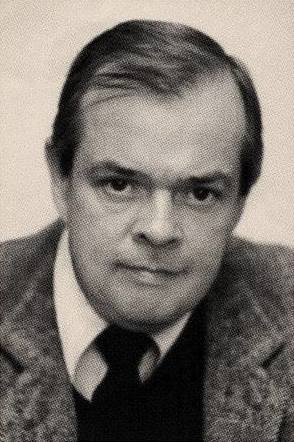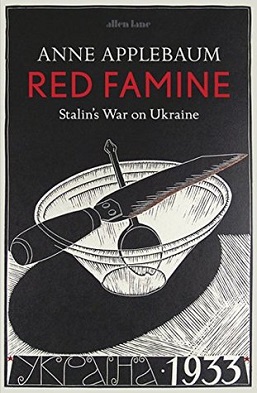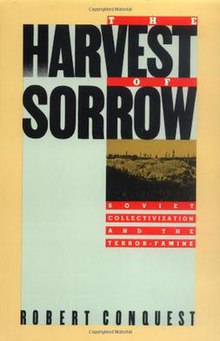
The Soviet Union introduced the collectivization of its agricultural sector between 1928 and 1940 during the ascension of Joseph Stalin. It began during and was part of the first five-year plan. The policy aimed to integrate individual landholdings and labour into nominally collectively-controlled and openly or directly state-controlled farms: Kolkhozes and Sovkhozes accordingly. The Soviet leadership confidently expected that the replacement of individual peasant farms by collective ones would immediately increase the food supply for the urban population, the supply of raw materials for the processing industry, and agricultural exports via state-imposed quotas on individuals working on collective farms. Planners regarded collectivization as the solution to the crisis of agricultural distribution that had developed from 1927. This problem became more acute as the Soviet Union pressed ahead with its ambitious industrialization program, meaning that more food needed to be produced to keep up with urban demand.

The Holodomor, also known as the Great Ukrainian Famine, was a man-made famine in Soviet Ukraine from 1932 to 1933 that killed millions of Ukrainians. The Holodomor was part of the wider Soviet famine of 1930–1933 which affected the major grain-producing areas of the Soviet Union.
Soviet and communist studies, or Soviet studies is the field of historical studies of the Soviet Union and other Communist states as well as historical studies of the Communist parties that existed or still exist in some form in many countries, both inside and outside the former Eastern Bloc, such as the Communist Party USA. Aspects of its historiography have attracted debates between historians on topics including totalitarianism and Cold War espionage.

Throughout Russian history famines, droughts and crop failures occurred on the territory of Russia, the Russian Empire and the USSR on more or less regular basis. From the beginning of the 11th to the end of the 16th century, on the territory of Russia for every century there were 8 crop failures, which were repeated every 13 years, sometimes causing prolonged famine in a significant territory. The causes of the famine were different, from natural and economic and political crises; for example, the Great Famine of 1931–1933, colloquially called the Holodomor, the cause of which was the collectivization policy in the USSR, which affected the territory of the Volga region in Russia, Ukraine and Kazakhstan.
Douglas Tottle is a Canadian trade union activist and journalist, most notable for being the author of the book Fraud, Famine, and Fascism: The Ukrainian Genocide Myth from Hitler to Harvard, which is classified as Holodomor denial literature. The book describes the Holodomor, the 1932–1933 human-made famine in Soviet Ukraine, as a "myth", a hoax perpetrated by Ukrainian fascists and anti-Soviet organizations in the West. It cast the "fraud" as originated by the German Nazis, and perpetuated by the CIA, and the supposedly CIA-linked Harvard University.

The Soviet famine of 1930–1933 was a famine in the major grain-producing areas of the Soviet Union, including Ukraine and different parts of Russia, including Northern Caucasus, Kuban Region, Volga Region, Kazakhstan, the South Urals, and West Siberia. Estimates conclude that 5.7 to 8.7 million people died of famine across the Soviet Union. Major contributing factors to the famine include: the forced collectivization of agriculture as a part of the First Five-Year Plan, and forced grain procurement, combined with rapid industrialization and a decreasing agricultural workforce. Sources disagree on the possible role of drought. During this period the Soviet government escalated its persecution against the kulaks. Soviet leader Joseph Stalin had ordered kulaks "to be liquidated as a class", so they became a target for the state. Persecution against the kulaks had been ongoing since the Russian Civil War, and had never fully subsided. Once collectivization became widely implemented, the persecution against the kulaks increased which culminated in a Soviet campaign of political repression, including arrests, deportations, and executions of large numbers of the kulaks in 1929–1932. Some kulaks responded by carrying out acts of sabotage such as killing livestock and destroying crops intended for consumption by factory workers. Despite the death toll mounting, Stalin chose to continue the Five Year Plan and collectivization. By 1934, the Soviet Union established an industrial baseline; however, it did come at the cost of millions of lives.
Holocaust trivialization is any comparison or analogy that diminishes the impact of the Holocaust, the Nazi genocide of six million European Jews during World War II. The Wiesel Commission defined trivialization as the abusive use of comparisons with the aim of minimizing the Holocaust and banalizing its atrocities. Originally, holocaust meant a type of sacrifice that is completely burnt to ashes; starting from the late 19th century, it started to denote an extensive destruction of a group, usually people or animals. The 1915 Armenian genocide was described as a "holocaust" by contemporary observers.

James E. Mace was an American historian, professor, and researcher of the Holodomor.

Holodomor denial is the claim that the Holodomor, a 1932–33 man-made famine that killed millions in Soviet Ukraine, did not occur or diminishing its scale and significance.

The International Commission of Inquiry Into the 1932–1933 Famine in Ukraine was set up in 1984 and was initiated by the World Congress of Free Ukrainians to study and investigate the 1932-1933 man-made famine that killed millions in Ukraine. Members of Commission selected and invited by World Congress of Free Ukrainians. None of them represent own country or country authority/institution and act as individual. Most of them are retired jurists, one of them died before Commission finish their investigations. The Commission was funded by donations from the worldwide Ukrainian diaspora.

In 1932–1933, a man-made famine, known as the Holodomor, killed 3.3–5 million people in the Ukrainian Soviet Socialist Republic, included in a total of 5.5–8.7 million killed by the broader Soviet famine of 1930–1933. At least 3.3 million ethnic Ukrainians died as a result of the famine in the USSR. Scholars debate whether there was an intent to starve millions of Ukrainians to death or not.

Collectivization in Ukraine, officially the Ukrainian Soviet Socialist Republic, was part of the policy of collectivization in the USSR and dekulakization that was pursued between 1928 and 1933 with the purpose to consolidate individual land and labour into collective farms called kolkhoz and to eliminate enemies of the working class. The idea of collective farms was seen by peasants as a revival of serfdom.

The causes of the Holodomor, which was a famine in Soviet Ukraine during 1932 and 1933, resulted in the death of around 3–5 million people. The factors and causes of the famine are the subject of scholarly and political debate, which include the Holodomor genocide question. Soviet historians, Stephen Wheatcroft and J. Arch Getty believe the famine was the unintended consequence of problems arising from Soviet agricultural collectivization which were designed to accelerate the program of industrialization in the Soviet Union under Joseph Stalin. Other academics conclude policies were intentionally designed to cause the famine. Some scholars and political leaders claim that the famine may be classified as a genocide under the definition of genocide that entered international law with the 1948 Genocide Convention.

The Holodomor was a 1932–33 man-made famine in Soviet Ukraine and adjacent Ukrainian-inhabited territories that killed millions of Ukrainians. Opinions and beliefs about the Holodomor vary widely among nations. It is considered a genocide by Ukraine, and Ukraine's Ministry of Foreign Affairs has lobbied for the famine to be considered a genocide internationally. By 2022, the Holodomor was recognized as a genocide by the parliaments of 23 countries and the European Parliament, and it is recognized as a part of the Soviet famine of 1932–1933 by Russia. As of June 2023, 34 countries recognise the Holodomor as a genocide.

Mass killings under communist regimes occurred through a variety of means during the 20th century, including executions, famine, deaths through forced labour, deportation, starvation, and imprisonment. Some of these events have been classified as genocides or crimes against humanity. Other terms have been used to describe these events, including classicide, democide, red holocaust, and politicide. The mass killings have been studied by authors and academics and several of them have postulated the potential causes of these killings along with the factors which were associated with them. Some authors have tabulated a total death toll, consisting of all of the excess deaths which cumulatively occurred under the rule of communist states, but these death toll estimates have been criticized. Most frequently, the states and events which are studied and included in death toll estimates are the Holodomor and the Great Purge in the Soviet Union, the Great Chinese Famine and the Cultural Revolution in the People's Republic of China, and the Cambodian genocide in Democratic Kampuchea.

Kulak, also kurkul or golchomag, was the term which was used to describe peasants who owned over 8 acres of land towards the end of the Russian Empire. In the early Soviet Union, particularly in Soviet Russia and Azerbaijan, kulak became a vague reference to property ownership among peasants who were considered hesitant allies of the Bolshevik Revolution. In Ukraine during 1930–1931, there also existed a term of pidkurkulnyk ; these were considered "sub-kulaks".

The Kazakh famine of 1930–1933, also known the Goloshchyokin Genocide, or Asharshylyk was a famine during which approximately 1.5 million people died in the Kazakh Autonomous Socialist Soviet Republic, then part of the Russian Socialist Federative Soviet Republic in the Soviet Union, of whom 1.3 million were ethnic Kazakhs. An estimated 38 to 42 percent of all Kazakhs died, the highest percentage of any ethnic group killed by the Soviet famine of 1930–1933. Other research estimates that as many as 2.3 million died.

Estimates of the number of deaths attributable to the Soviet revolutionary and dictator Joseph Stalin vary widely. The scholarly consensus affirms that archival materials declassified in 1991 contain irrefutable data far superior to sources used prior to 1991 such as statements from emigres and other informants.

Red Famine: Stalin's War on Ukraine is a 2017 non-fiction book by Anne Applebaum, focusing on the history of the Holodomor. The book won the Lionel Gelber Prize and the Duff Cooper Prize.











